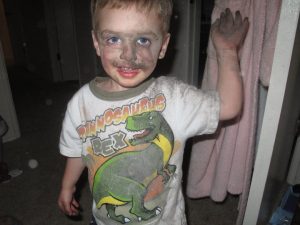 One day while helping a friend in her home she asked me if I ever felt as if I was at war with my family. She said that if anything was organized it wouldn’t stay that way. If it was clean it would get dirty. If it was peaceful chaos would inevitably show up.
One day while helping a friend in her home she asked me if I ever felt as if I was at war with my family. She said that if anything was organized it wouldn’t stay that way. If it was clean it would get dirty. If it was peaceful chaos would inevitably show up.
I understood her frustration. After all, I had raised seven children. However, somewhere along the way, I had a mighty change of heart. I went from waging war to ministering to my family. It was a slight mental shift in how I looked at the work required to manage my family and it has made a huge difference in how I feel on busy and chaotic days.
When we step out of management mode we begin to ‘see’ the needs of those in our family and we’re better able to step into the service and kindness mode. We put ourselves in a place where we’re able to be Present. We see the ‘one’ and minister to them rather than being upset that there is one more thing to take care of.
As parents, one of our greatest responsibilities is to help our children become successful adults. I have found that the most successful adults I know are generous and kind. They serve others. They ‘see’ people and reach out.
Last Sunday one of my grandchildren was ill and one parent had to stay home with them. That caused the rest of the family to run late. In our church, the Sacrament is passed early in the meeting and my daughter worried that they wouldn’t get there in time. Sure enough, they missed the bread portion of the ceremony. She was deeply disappointed.
Then the children who were with her began to struggle to be still and they all ended up out in the hall. Her 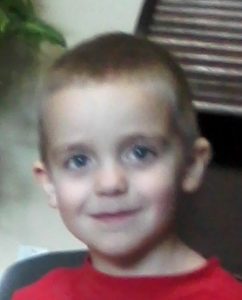 nine-year-old son, Jack, reached out and touched his mom on the arm and said, “Mom, I’m sorry we missed the bread and that we’re out in the hall.”
nine-year-old son, Jack, reached out and touched his mom on the arm and said, “Mom, I’m sorry we missed the bread and that we’re out in the hall.”
This is a perfect example of a person ‘seeing’ the need of another and this someone was just nine years old.
That same nine-year-old ‘saw’ me the other day. It had been a long day. I had been doing a lot of physical labor and I was tired. In fact, I was feeling a bit old. Jack came to me and said, “Grandma, I really like that shirt. You look good in it.” As you can imagine I felt better.
Jack has learned from the example of his parents to ‘see’. He has learned the value of kindness and service within his family because his parents serve their children rather than just managing them.
As I was beginning to transition from being in constant management mode in my family to serving my spouse and children I remember watching a video of a real-life experience that helped me see the difference between working in a family and serving the family.
A man with a very important job was leaving his home to go to a very important meeting. He had on a suit and tie. As he descended the stairs he saw his eighteen-month-old crawling up the stairs. He picked her up to give her a hug and say goodbye and found that she needed a diaper change.
This busy and important man, this father, did not call his equally busy wife. He got a diaper and wipes and sat down at the top of the stairs and changed his daughter. While he served his daughter he smiled and talked with her. He ‘saw’ his daughters need. He was also aware of the need of his wife. He served them both with great kindness and did not feel put upon while doing it. He was not in management mode but in the kindness and service mode.
WHY MAKE A MENTAL SHIFT
There are some very good reasons to work on this slight mental shift, from management to service:
• When we lose ourselves in service to others we grow and flourish. So do our children.
• When we feel that the work we do is serving rather than a burden we feel less overwhelmed.
• With this slight mental shift, we’re able to remain calm when things aren’t going well.
• When we serve our family we model it for our children who become kinder.
• Families who have a culture of service and kindness sustain one another better.
• In fact, as we serve rather than wage war, we begin to create a culture of kindness and serviceability.
In today’s world, there are many opportunities to reach out and serve. Let’s begin in our own families. Consider it a privilege rather than a daily burden. You can’t and won’t respond this way all of the time. But if you can slip into this mindset even a few times each day you will feel better about parenting and you will have more joy in the work that you do.
What service have you given to or received from your children? Please comment. I would love to hear your experiences.
Here’s to more joy,
Mary Ann
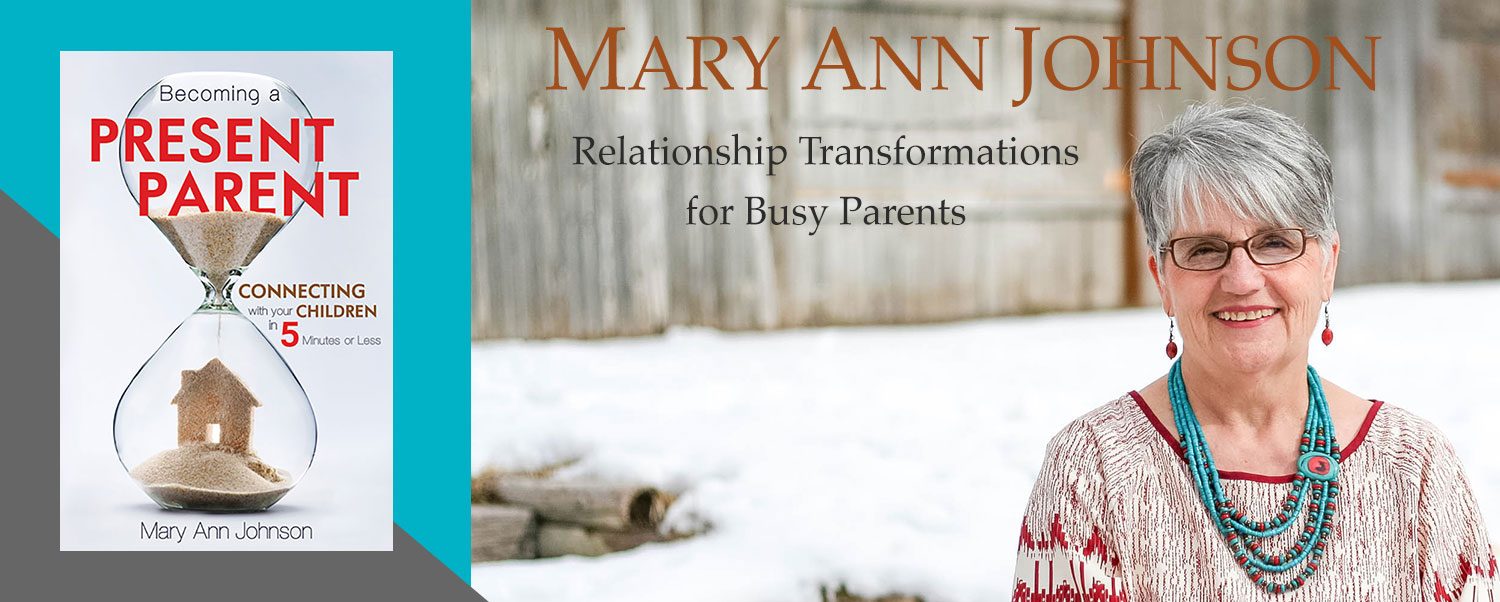
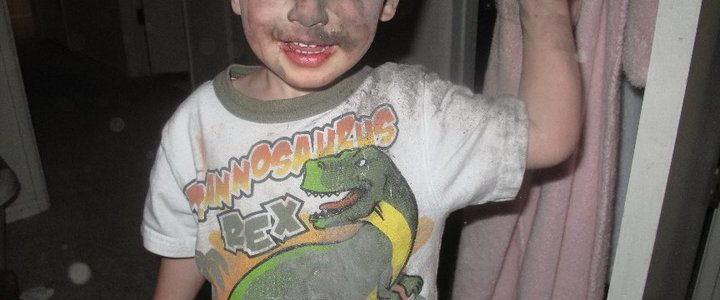

 who reminded him of the principle we’ve been discussing—simple things, done over time consistently, bring significant results. His servant said, “If the prophet had bid thee do some great thing, wouldest thou not have done it? How much rather then, when he saith to thee, Wash, and be clean?” (2 Kings 5:13).
who reminded him of the principle we’ve been discussing—simple things, done over time consistently, bring significant results. His servant said, “If the prophet had bid thee do some great thing, wouldest thou not have done it? How much rather then, when he saith to thee, Wash, and be clean?” (2 Kings 5:13).
 Recently I attended a parenting event. I had the opportunity to ask a few parents what they wanted to know. One woman’s response was poignant – How do I manage to connect with a teen if no foundation has been laid?
Recently I attended a parenting event. I had the opportunity to ask a few parents what they wanted to know. One woman’s response was poignant – How do I manage to connect with a teen if no foundation has been laid? make a small detour. Grab them and tickle them for a few moments, just long enough to get a little tussle going. Then gently punch a shoulder or tousle a head and move on.
make a small detour. Grab them and tickle them for a few moments, just long enough to get a little tussle going. Then gently punch a shoulder or tousle a head and move on.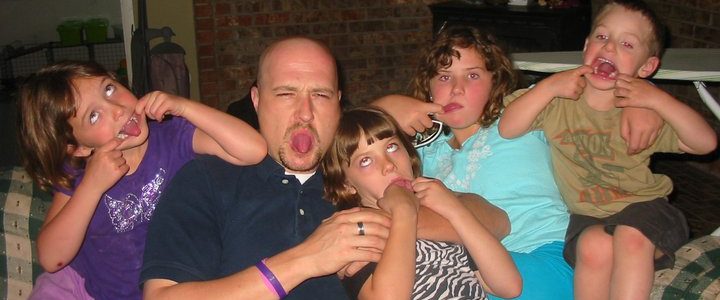
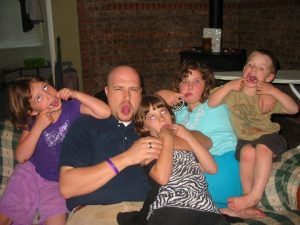 For the last two weeks, I have been writing about families and
For the last two weeks, I have been writing about families and  excited to use it. The next morning was Sunday, and we needed to get to a very important reception right after church. I said to Don, “Honey, there isn’t time to grill chicken today and make it to the reception. You’ll have to grill chicken tomorrow.”
excited to use it. The next morning was Sunday, and we needed to get to a very important reception right after church. I said to Don, “Honey, there isn’t time to grill chicken today and make it to the reception. You’ll have to grill chicken tomorrow.”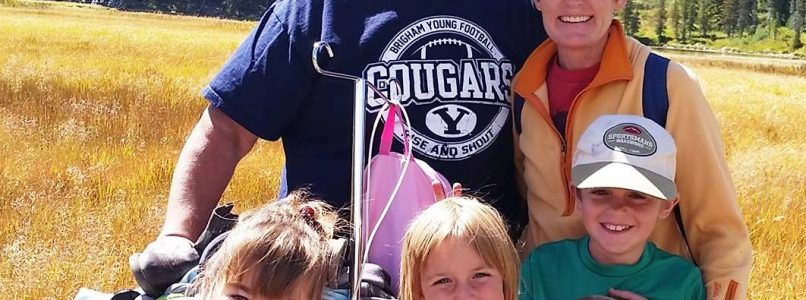
 I went to Seattle to visit my youngest daughter’s family and to participate in her husband’s graduation. When we walked in the house from the airport at 11:30 that night we had to step over toys, shoes, the day’s clothes, etc. My daughter looked at me and said, “Mom I cleaned this house twice for you.” I smiled. I know that feeling. I also know that she has two small, busy children and that she spends time with them.
I went to Seattle to visit my youngest daughter’s family and to participate in her husband’s graduation. When we walked in the house from the airport at 11:30 that night we had to step over toys, shoes, the day’s clothes, etc. My daughter looked at me and said, “Mom I cleaned this house twice for you.” I smiled. I know that feeling. I also know that she has two small, busy children and that she spends time with them.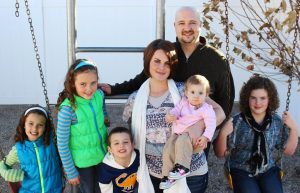 is repeated. She always asks me why I pick some major thing to clean every time I come. Well, it’s because I know what a challenge it is to stay on top of the daily things, let alone get any deep cleaning done, especially when you are willing to put it aside to help a five-year-old ride her bike or create a superhero costume for a nine-year-old son.
is repeated. She always asks me why I pick some major thing to clean every time I come. Well, it’s because I know what a challenge it is to stay on top of the daily things, let alone get any deep cleaning done, especially when you are willing to put it aside to help a five-year-old ride her bike or create a superhero costume for a nine-year-old son. I live with my oldest daughter and her family, in an attached apartment. So I see what goes on there even more intimately. It is almost always slightly chaotic. The floor is rarely uncluttered for more than a few hours at a time. But I see her stop what she is doing to help any one of her four children with whatever project or need they may have. In fact, I have thought to myself, “Man, I would have told them I would help them later.” You see, I still have to work on being Present!
I live with my oldest daughter and her family, in an attached apartment. So I see what goes on there even more intimately. It is almost always slightly chaotic. The floor is rarely uncluttered for more than a few hours at a time. But I see her stop what she is doing to help any one of her four children with whatever project or need they may have. In fact, I have thought to myself, “Man, I would have told them I would help them later.” You see, I still have to work on being Present!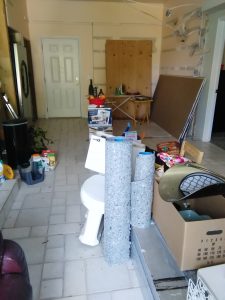
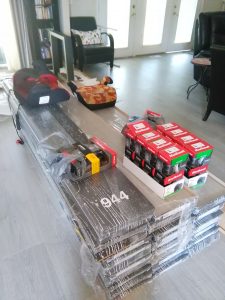
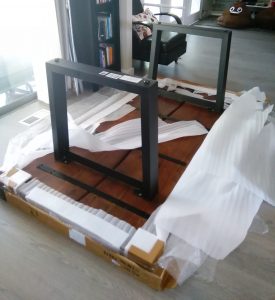

 I had a friend ask me a very interesting question the other day. “Did you write your book because you had troubles in your own family?” That was a fair question but the answer was NO. That isn’t why I wrote it.
I had a friend ask me a very interesting question the other day. “Did you write your book because you had troubles in your own family?” That was a fair question but the answer was NO. That isn’t why I wrote it.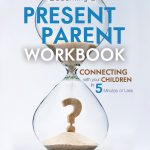
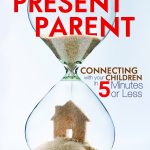 I received so many emails from people who had attended classes, workshops, webinars, and presentations saying that this information was life changing for them. I knew there had to be a way to broaden the audience and touch more families. That is how
I received so many emails from people who had attended classes, workshops, webinars, and presentations saying that this information was life changing for them. I knew there had to be a way to broaden the audience and touch more families. That is how  “Being a single woman, without children, I wasn’t sure what value this book would have for me. It impacted me greatly! I have set a goal to re-read it every few years. It’s not just a book about being a Present parent. It’s a book about being a Present person. Jenny Johnson, M.A., CCC-SLP
“Being a single woman, without children, I wasn’t sure what value this book would have for me. It impacted me greatly! I have set a goal to re-read it every few years. It’s not just a book about being a Present parent. It’s a book about being a Present person. Jenny Johnson, M.A., CCC-SLP just with children, but with all relationships. I have enjoyed it profoundly… Jason Hewlett, Dad and Speaker
just with children, but with all relationships. I have enjoyed it profoundly… Jason Hewlett, Dad and Speaker  I’m not much of a reader. Unless a book catches my attention within the first few pages, I seldom read it all the way through. This book not only drew me in from the beginning but I finally had to make myself stop reading and go to bed. “Becoming a Present Parent” will be one of those life-changing books for parents and for anyone who wants to have an amazing relationship with child. Well worth the read. Cindy Winward, Mother of four grown children and mentor at Midwives College of Utah
I’m not much of a reader. Unless a book catches my attention within the first few pages, I seldom read it all the way through. This book not only drew me in from the beginning but I finally had to make myself stop reading and go to bed. “Becoming a Present Parent” will be one of those life-changing books for parents and for anyone who wants to have an amazing relationship with child. Well worth the read. Cindy Winward, Mother of four grown children and mentor at Midwives College of Utah insight and real-life steps in helping you stay “checked in” with your children, a difficult thing in this distracting world. I love how Mary Ann teaches us how to truly connect with our children. Ann Webb, Humanitarian, Author and Founder of Ideal LifeVision
insight and real-life steps in helping you stay “checked in” with your children, a difficult thing in this distracting world. I love how Mary Ann teaches us how to truly connect with our children. Ann Webb, Humanitarian, Author and Founder of Ideal LifeVision You may read Becoming a Present Parent all the way through one time. But then you’ll come back to it time and again to refresh on certain topics at the very time you need them. My guess is your copy will become dog-eared and marked up, and will become like a comfortable friend. Norma Jean Lutz, Author, Speaker, Editor, Novel Critique Consultant, Ghostwriter
You may read Becoming a Present Parent all the way through one time. But then you’ll come back to it time and again to refresh on certain topics at the very time you need them. My guess is your copy will become dog-eared and marked up, and will become like a comfortable friend. Norma Jean Lutz, Author, Speaker, Editor, Novel Critique Consultant, Ghostwriter 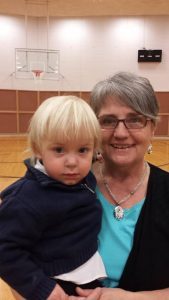
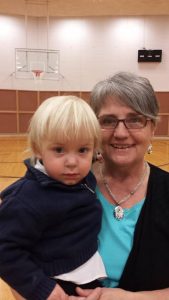 As you know I have been writing a new book – Becoming a Present Parent: Maximizing Presence in Five Minutes or Less. I started in August 2015 and finished in January 2016. Since then I have been learning the dance of being an independent author. Whew, it has required a lot of dance lessons!!
As you know I have been writing a new book – Becoming a Present Parent: Maximizing Presence in Five Minutes or Less. I started in August 2015 and finished in January 2016. Since then I have been learning the dance of being an independent author. Whew, it has required a lot of dance lessons!!